
Lian Li was originally known mainly for high-end cases, but since the introduction of the first Uni Fan fans, that has changed a bit and the fans have virtually fought their way next to the cases. This is because Uni Fan were the pioneers of clean cabling and offered the ability to control multiple fans including RGB lighting with just one cable. The development continued constantly and now Lian Li offers a fairly extensive selection of fans. In the Lian Li Uni Fan P28 review, we take a look at the latest representatives of the family. These come without native RGB lighting, but promise outstanding performance in return.
Specifications
| Size | 120 x 120 x 28 mm |
| Speed | 200 – 2600 RPM |
| Bearing | Fluid Dynamic Bearing |
| Fan blade material | Liquid crystal polymer |
| Connection | PWM with proprietary daisy-chaining |
| Max. static pressure | 4.79 mm H2O |
| Max. airflow | 92 CFM |
| Max. volume development | 32.1 dB(A) |
| Guarantee | 6 years |
| Price | € 69.89 * (white) € 68.21 * (black) |


Packaging and scope of delivery
- Relatively compact packaging
- Long warranty
- Various cables included
The Lian Li Uni Fan P28s come – as expected as daisy-chained fans – in a pack of 3. Accordingly, the packaging is thick. And yet kept surprisingly compact. The specifications are summarized on the back. When packing the test fans, we noticed that a sticker with a 6-year warranty was stuck over a 2-year warranty. 6 years warranty is a definite plus there. It is quite to be expected with later packaging that the 6-year warranty is directly on the package. Whatever – the long warranty is cool.
When you open the package, the first thing you see is a load of cables. One connection cable for each fan or one for the last fan in the row. Another cable is for forwarding the signal. The black part is a controller to switch between the three speed modes. The fans are also individually packed in bubble wrap – lightweight, compact and efficient:

Design
- Thicker than regular fans
- Brushed aluminum on the sides
- Color options in white and black
One aspect of the Lian Li Uni Fan P28 is right in the name: The 28 stands for the thickness in mm, which is about 10% thicker than regular fans, which are usually only 25 mm thick. When playing with fan thickness, Phanteks for example have proven high performance with the T30, but Lian Li itself had also shown with the Uni Fan AL120 V2 that the extra thickness can definitely mean a plus in performance.
On the side that is not used for the daisy chain connection, surfaces in brushed aluminum look provide a high-end impression, matching other Uni Fans. However, there are no RGB elements. Otherwise, the fans are quite uniformly colored. In this case, it’s the white fans, but there is also the Lian Li Uni Fan P28 in black.
Workmanship
- High quality workmanship
- Very small gaps between the fan blades and the frame
- Safe fit when fans are connected
The Lian Li Uni Fan P28s look extremely high quality. The frame is not only strong and torsion-resistant, but also feels very good. There are also rubberized support surfaces in the corners, which should dampen the transmission of vibrations. However, the fan blades rotate very smoothly and full so that hardly any vibrations are caused by the fans. Speaking of fan blades, they make very good use of space, are very hard, and have minimal gaps between them and the frame. Unlike fans from other brands, you don’t really see the crystalline structure of the liquid crystal polymer fan blades on the Lian Li Uni Fan P28.
Even when the fans are connected, they sit snugly against each other. Nothing wobbles there. And the included cables with the color-matching sheathing, which nevertheless remain compact, also leave a positive impression in the test.
Overall, the Lian Li Uni Fan P28 did not leave any room for criticism in the test. The workmanship is professional and high-quality to the full extent.
Setting up
- Standard connection cable for easy operation
- Daisy-chain connection possible
The special feature of the Uni Fan from Lian Li is of course the daisy-chain capability. This means that the fans can simply be clipped together and a cable is connected to the last of the fans, which is connected to the motherboard by a standard 4-pin PWM cable. Unlike the first generations of Uni Fans, the P28 also gives you the option to connect multiple fan groups with one cable. For example, you can connect a 240mm radiator with two fans and use the last fan in the back as a case fan.
Since you connect the fans together using a clip system, the fan chain also ends with the clips sticking out. However, this is not a problem, because you can simply turn them and take them out. Now you just have to remember where you put these parts to find them again if you need them again in the future. So I would only remove these clips if they are visible and visually disturbing.
Next, the speed range can be selected. There are three modes to choose from via an external switch: L, M, and H. L keeps the fans at a low volume by limiting them to around 1300 RPM. On M, they speed up to 2200 RPM, putting them on par with regular all-around fans. On H, they can be pushed up to 2600 RPM, which is equivalent to high-performance and industrial fans. Due to the external regulation, the speed can also be selected later and the fans do not have to be removed for this.
At the corners of the Lian Li Uni Fan P28, the fan holes are slightly recessed to avoid problems with screws that were intended for mounting fans with a thickness of 25 mm. This will reduce compatibility issues.

Controller this, controller that
- Fans also work without controller
- Controller can also be used for other fans
The function of the small fan controller I have largely already described. But this could raise further questions, which I would like to clarify immediately. Can you run the fans without the controller? Yes, that is no problem. The fans then act like in H-mode. So the controller virtually takes over the role of a low-noise adapter from Noctua and only reduces the maximum speed. Since it is simply connected via PWM 4-pin cable, does it then simply work for other fans? Yes, no problem here either. For example, a Noctua NF-F12 industrialPPC PWM could be reduced to a maximum speed of 1600 RPM through this. Typically, these fans spin up to around 3000 RPM.
The controller has a small magnet on the back, so it can easily take up a reachable position on the back of the case without having to be permanently mounted or flapping around freely.
Fan test
- Comparison against two other high performance fans
- Explanation of the systems used
To test fans, a comparison is a good solution. And since the Lian Li Uni Fan P28 is obviously aiming for high-end performance, it is quite appropriate to throw other high-end fans into the comparison. In the 120mm range, the Noctua NF-A12x25 in particular stands out, as does the be quiet! Silent Wings Pro 4. Both are extremely powerful all-around fans, with the former offering extremely high performance, especially on radiators and coolers. The latter are excellent case fans that are also used in UHS mode in all tests. Thus, two extremely strong competitors are chosen. However, the Lian Li are the only daisy-chained fans in the test, whereas the others have to be connected with a separate cable each.

The radiator test takes place on the 360mm HPE radiator of an Alphacool Eisbaer Pro. Three Lian Li Uni Fan P28s are also used as case fans in the test of all three fan pairs, spinning constantly at around 1030 RPM. The cooler cools an AMD Ryzen 9 5950X, which draws around 155W of power with an overclock when running Cinebench R23, which is used to generate the load. The whole thing sits in a Fractal Design Pop XL Air. So, in addition to the radiator, the fans have to overcome the resistance of the front grille.
The case fan test takes place in the second test system, the core components of which are a Fractal Design North as the case sits a Ryzen 5 3600X with a DeepCool AK400. For the test, the load used is 3DMark, which runs the same combined test on loop, while the CPU and video card coolers are set to fixed, low speeds, so the case fans make the only difference.
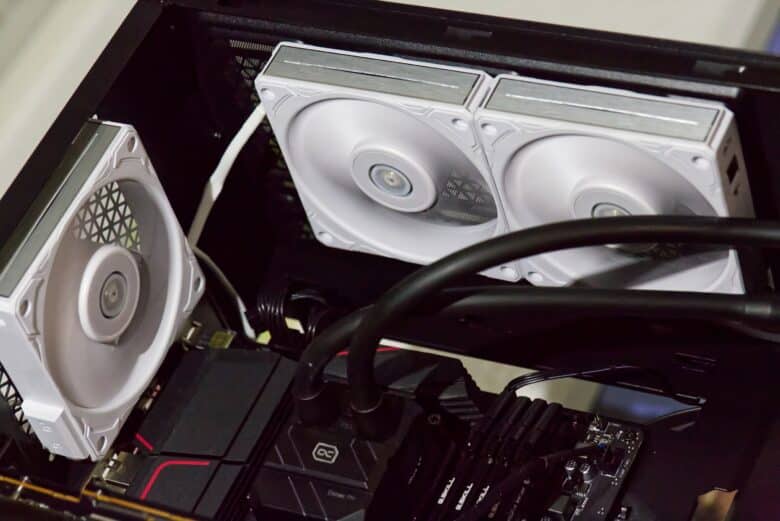
Power on the radiator
First, I give all the fans a run for their money – this makes them relatively loud, but shows their full performance.
| Fans | Temperature difference from room temperature | Rotation speed and volume |
| Lian Li Uni Fan P28 | 32.2 K | 2550 RPM @ 57.5 dB(A) |
| Noctua NF-A12x25 | 32.2 K | 2000 RPM @ 52.5 dB(A) |
| be quiet! Silent Wings Pro 4 | 30.6 K | 2680 RPM @ 58 dB(A) |
Since the top speed is hardly relevant to everyday life from a noise standpoint alone, here comes an attempt to see how the fans behave when used at a uniform speed of 1100 RPM.
| Fan | temperature difference from room temperature | Loudness |
| Lian Li Uni Fan P28 (41% PWM) | 34.3 K | 35.1 dB(A) |
| Noctua NF-A12x25 (47% PWM) | 34.4 K | 37.5 dB(A) |
| be quiet! Silent Wings Pro 4 (29% PWM) | 35 K | 36 dB(A) |
And to take it a step further, now the speed is not taken as a reference, but the system should be as quiet as possible, so the fans are now set to a speed that is the limit of perceptibility to the other fans in the system, 33 dB(A).
| Fan | Temperature difference from room temperature | Rotation speed |
| Lian Li Uni Fan P28 (34% PWM) | 36.4 K | 890 RPM |
| Noctua NF-A12x25 (36% PWM) | 36.4 K | 880 RPM |
| be quiet! Silent Wings Pro 4 (21% PWM) | 37.5 K | 860 RPM |
Results on the radiator
- Lian Li Uni Fan P28 are extremely powerful on the radiator
- Loudness remains low into the mid-range
Okay, the Lian Li Uni Fan are showing up impressively here. The performance is about on par with the Noctua NF-A12x25. Only in the upper speed range I would have expected a bit more power from the Lian Li for the high volume due to the speed. Positively seen: M-mode would have sufficed here as well. At 1100 RPM in this specific setup, the Lian Li Uni Fan P28s were even a touch quieter and still on par with the legendary Noctua fans in terms of performance.

At peak performance, the be quiet! Silent Wings Pro 4 pull away, also spinning faster than the Lian Li and getting a bit louder. In the tests in lower speed ranges, the be-quiet! fans are slightly behind.
The be-quiet! fans also have a mode selection. Unlike the Lian Li Uni Fan P28, however, the control for this is directly on the fan and not on an external controller. At first glance, this may seem cleaner, but I didn’t realize I had selected the wrong mode until after attaching it to the radiator. With the Lian Li it would have been a simple push of the controller, but the be quiet! Silent Wings Pro 4 I had to completely unscrew again first to get to the switch.
Use as a case fan
Once again, we start with the tests at full power. The load is 10 minutes of 3DMark Fire Strike, of this only the combined test and this runs for 10 minutes to warm up the system until the measurement is taken over a minute.
| Fan | Temperature difference from room temperature | Rotation speed and volume |
| Lian Li Uni Fan P28 | 30.1K (CPU) & 29.2K (GPU) | 2550 RPM @ 52 dB(A) |
| Noctua NF-A12x25 | 30.4 K (CPU) & 30.6 K (GPU) | 2070 RPM @ 43.5 dB(A) |
| be quiet! Silent Wings Pro 4 | 29.3 K (CPU) & 28.2 K (GPU) | 2880 RPM @ 52 dB(A) |
Therefore, now the test at uniform 1100 RPM, which is an average balanced speed.
| Fan | Temperature difference from room temperature | Loudness |
| Lian Li Uni Fan P28 (42% PWM) | 36.6 K (CPU) & 37 K (GPU) | 33 dB(A) |
| Noctua NF-A12x25 (46% PWM) | 34.1 K (CPU) & 35.3 K (GPU) | 34 dB(A) |
| be quiet! Silent Wings Pro 4 (28% PWM) | 37 K (CPU) & 37.5 K (GPU) | 31.5 dB(A) |
Lastly, the test is performed at a uniform 33 dB(A). For the Lian Li Uni Fan P28, this means that exactly the 1100 RPM is hit again. The be quiet! can be sped up, resulting in a performance gain, whereas the Noctua have to be slowed down a bit.
| Fans | Temperature difference from room temperature | Rotation speed |
| Lian Li Uni Fan P28 (42% PWM) | 36.6 K (CPU) & 37 K (GPU) | 1100 RPM |
| Noctua NF-A12x25 (42% PWM) | 34.8K (CPU) & 36.1K (GPU) | 1010 RPM |
| be quiet! Silent Wings Pro 4 (37% PWM) | 34.3K (CPU) & 36.1K (GPU) | 1370 RPM |
Results of the test as a case fan
- Very solid performance
- Performance almost on par with high-end competitor fans
At peak performance, the Lian Li Uni Fan P28 sits between the snappier be quiet! Silent Wings Pro 4 and the slower (and thus far quieter) Noctua NF-A12x25. The performance is thus quite respectable, but the noise development is not exactly suitable for everyday use.
The situation is similar when the fans are operated at a consistent speed. Once again, the Lian Li are between the two competitors here in terms of both noise and performance. And that’s quite a remarkable result for these two high-performance fans!

In the most important test – performance at the lowest possible noise level – the Noctua fan has the advantage of high performance at low speeds, and the be-quiet! fan is quiet enough to rev up noticeably. Overall, the Lian Li Uni Fan P28 thus lose minimally when it comes to performance as a quiet case fan, but the small difference can already be considered quite a success in this competitive field!
Use on the air cooler
- Additional thickness hinders mounting on air coolers
Use on an air cooler is not quite a typical application for a fan designed for daisy chaining. Moreover, the increased thickness of the Lian Li Uni Fan P28 prevents it from being mounted on regular air coolers. An attempt in this regard failed – you should look for other fans for air coolers.
Conclusion
In the Lian Li Uni Fan P28 review, it was almost unfair to throw the extreme high-end fans of the established competition into the comparison. All the more impressive is the result, which is virtually on a par with the other fans – and that despite the quite noticeably lower price of the Lian Li. Sure – the P28s aren’t cheap either. But when you look at what you pay for three Noctua NF-A12x25s or be quiet! Silent Wings Pro 4s, this is put into perspective.
High workmanship, absolute top performance and the outstandingly clean cabling come together here! In addition, there is the very wide adjustable speed range with three modes that can be controlled externally without having to fiddle with the fans directly. I’ve had many fans in my hands lately. And I have to say that the Lian Li Uni Fan P28 definitely deliver some of the best overall package if you’re looking for 120mm fans without RGB lighting.
Lian Li Uni Fan P28
Workmanship
Cooling performance
Noise level
Features
Value for money
95/100
The Lian Li Uni Fan P28s offer everything you could want - except for a light - good build quality, a long warranty, high performance and superbly simple cabling.



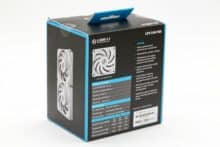




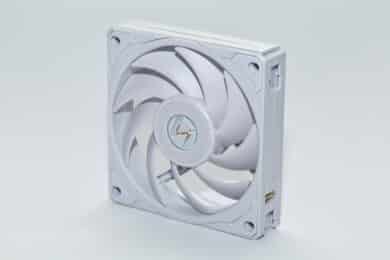







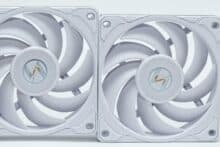







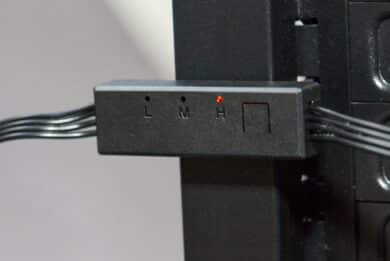



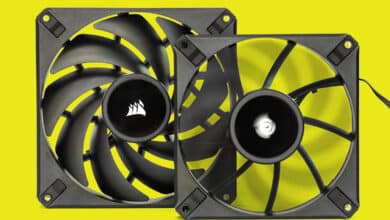
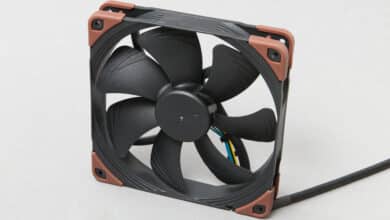
No replies yet
Neue Antworten laden...
Gehört zum Inventar
Beteilige dich an der Diskussion in der Basic Tutorials Community →